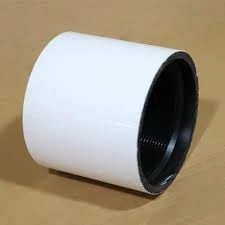- Afrikaans
- Albanian
- Amharic
- Arabic
- Armenian
- Azerbaijani
- Basque
- Belarusian
- Bengali
- Bosnian
- Bulgarian
- Catalan
- Cebuano
- Corsican
- Croatian
- Czech
- Danish
- Dutch
- English
- Esperanto
- Estonian
- Finnish
- French
- Frisian
- Galician
- Georgian
- German
- Greek
- Gujarati
- Haitian Creole
- hausa
- hawaiian
- Hebrew
- Hindi
- Miao
- Hungarian
- Icelandic
- igbo
- Indonesian
- irish
- Italian
- Japanese
- Javanese
- Kannada
- kazakh
- Khmer
- Rwandese
- Korean
- Kurdish
- Kyrgyz
- Lao
- Latin
- Latvian
- Lithuanian
- Luxembourgish
- Macedonian
- Malgashi
- Malay
- Malayalam
- Maltese
- Maori
- Marathi
- Mongolian
- Myanmar
- Nepali
- Norwegian
- Norwegian
- Occitan
- Pashto
- Persian
- Polish
- Portuguese
- Punjabi
- Romanian
- Russian
- Samoan
- Scottish Gaelic
- Serbian
- Sesotho
- Shona
- Sindhi
- Sinhala
- Slovak
- Slovenian
- Somali
- Spanish
- Sundanese
- Swahili
- Swedish
- Tagalog
- Tajik
- Tamil
- Tatar
- Telugu
- Thai
- Turkish
- Turkmen
- Ukrainian
- Urdu
- Uighur
- Uzbek
- Vietnamese
- Welsh
- Bantu
- Yiddish
- Yoruba
- Zulu
Well Casing Coupling Techniques for Enhanced Drilling Efficiency and Safety
Understanding Well Casing Coupling A Key Component in Oil and Gas Drilling
In the oil and gas industry, well casing is an essential element of the drilling process. It refers to the metallic structure that is inserted into the borehole after drilling to provide stability to the newly formed wellbore. Well casing ensures that the well remains open and protected from the surrounding geology, preventing collapse and contamination. Among the critical components of well casing is the casing coupling, which plays a pivotal role in maintaining the integrity of the entire well structure.
What is a Well Casing Coupling?
A well casing coupling is a short piece of pipe that connects two or more lengths of casing. These couplings are typically made from steel, designed to withstand extreme pressures and temperatures encountered in drilling operations. The couplings provide a means of joining sections of casing together, thereby ensuring a continuous path from the surface to the depth of the well. Properly configuring the couplings is vital to ensure the overall performance and safety of the well.
Types of Couplings
There are various types of casing couplings to accommodate different well conditions and requirements. The most common types include
1. Straight Couplings These couplings are cylindrical and facilitate a simple joint between casing pipes. They are easy to install and are most often used in standard applications.
2. Long Couplings These are longer than standard straight couplings and provide more surface area for the connection. Long couplings can distribute stress better, making them suitable for high-pressure wells.
3. Threaded Couplings These feature threaded ends that ensure a tight connection between casing pipes. This design is popular for scenarios where pressure containment is critical.
4. Welded Couplings In this case, the ends of the casing pipes are welded together. This can provide a stronger joint but requires advanced skills and equipment for proper installation.
well casing coupling

Importance of Well Casing Couplings
The integrity of a drilling operation relies heavily on the quality and installation of well casing couplings. They serve multiple purposes, including
- Structural Integrity Couplings help maintain the structural integrity of the casing, preventing collapse and allowing the casing pipes to withstand the pressures of the surrounding geology.
- Fluid Containment Properly connected casing pipes via couplings help prevent the unintended escape of fluids, which could lead to environmental issues or loss of resources.
- Isolation of Formations Couplings allow for the isolation of different geological formations, which is crucial for managing pressure and preventing undesirable fluid movements.
Challenges and Solutions
Despite their importance, casing couplings face several challenges during drilling operations, including issues related to corrosion, thread wear, and fatigue from cyclic loading. To address these challenges, manufacturers continually innovate, developing couplings with advanced coatings and materials to enhance durability and reduce wear over time. Engineers also use advanced simulation techniques to predict the performance of couplings under varying conditions, ensuring a reliable and effective drilling process.
Conclusion
In conclusion, well casing couplings are a fundamental component of the drilling industry. They connect sections of casing, providing the necessary support and integrity to wells in challenging environments. As the industry evolves, continuous advancements in coupling technology will enhance drilling safety and efficiency, making them an indispensable part of oil and gas exploration and production. Understanding these components enables better planning and execution of drilling operations, ultimately leading to more successful outcomes in the field.
-
Tubing Pup Joints: Essential Components for Oil and Gas OperationsNewsJul.10,2025
-
Pup Joints: Essential Components for Reliable Drilling OperationsNewsJul.10,2025
-
Pipe Couplings: Connecting Your World EfficientlyNewsJul.10,2025
-
Mastering Oilfield Operations with Quality Tubing and CasingNewsJul.10,2025
-
High-Quality Casing Couplings for Every NeedNewsJul.10,2025
-
Boost Your Drilling Efficiency with Premium Crossover Tools & Seating NipplesNewsJul.10,2025







